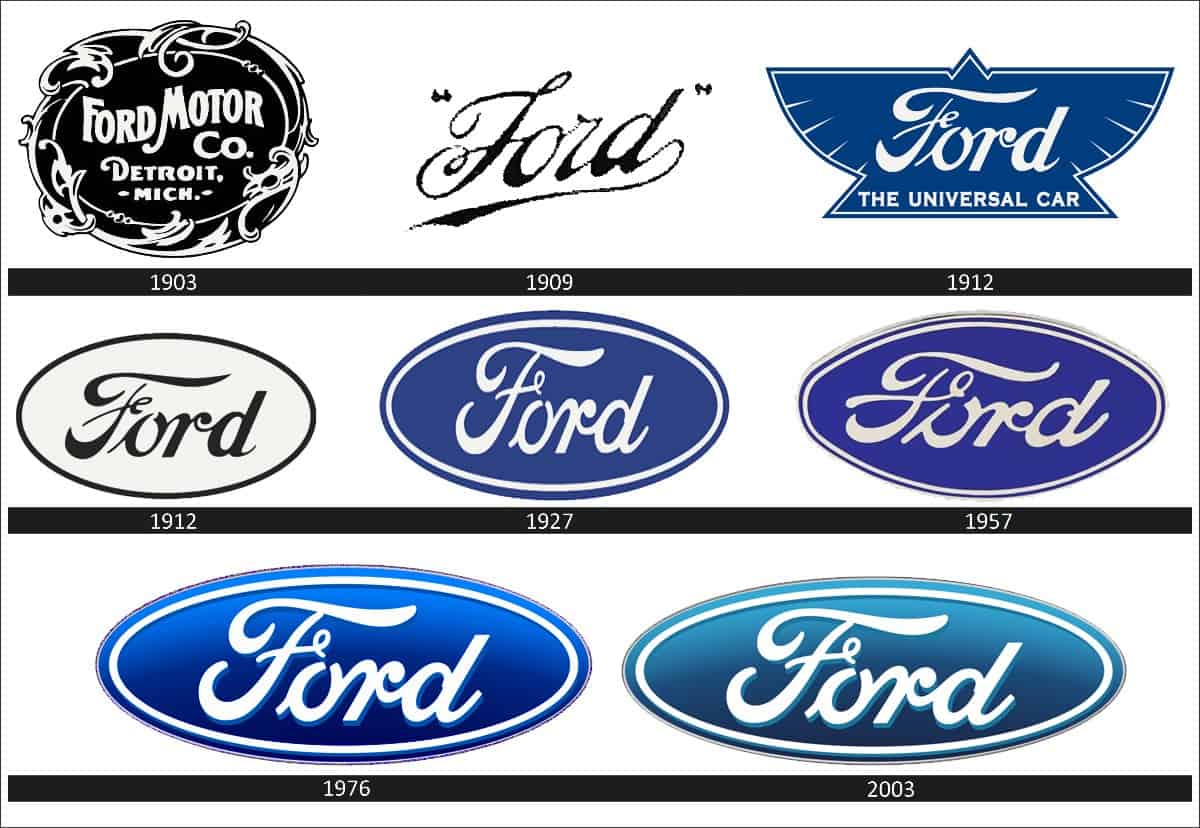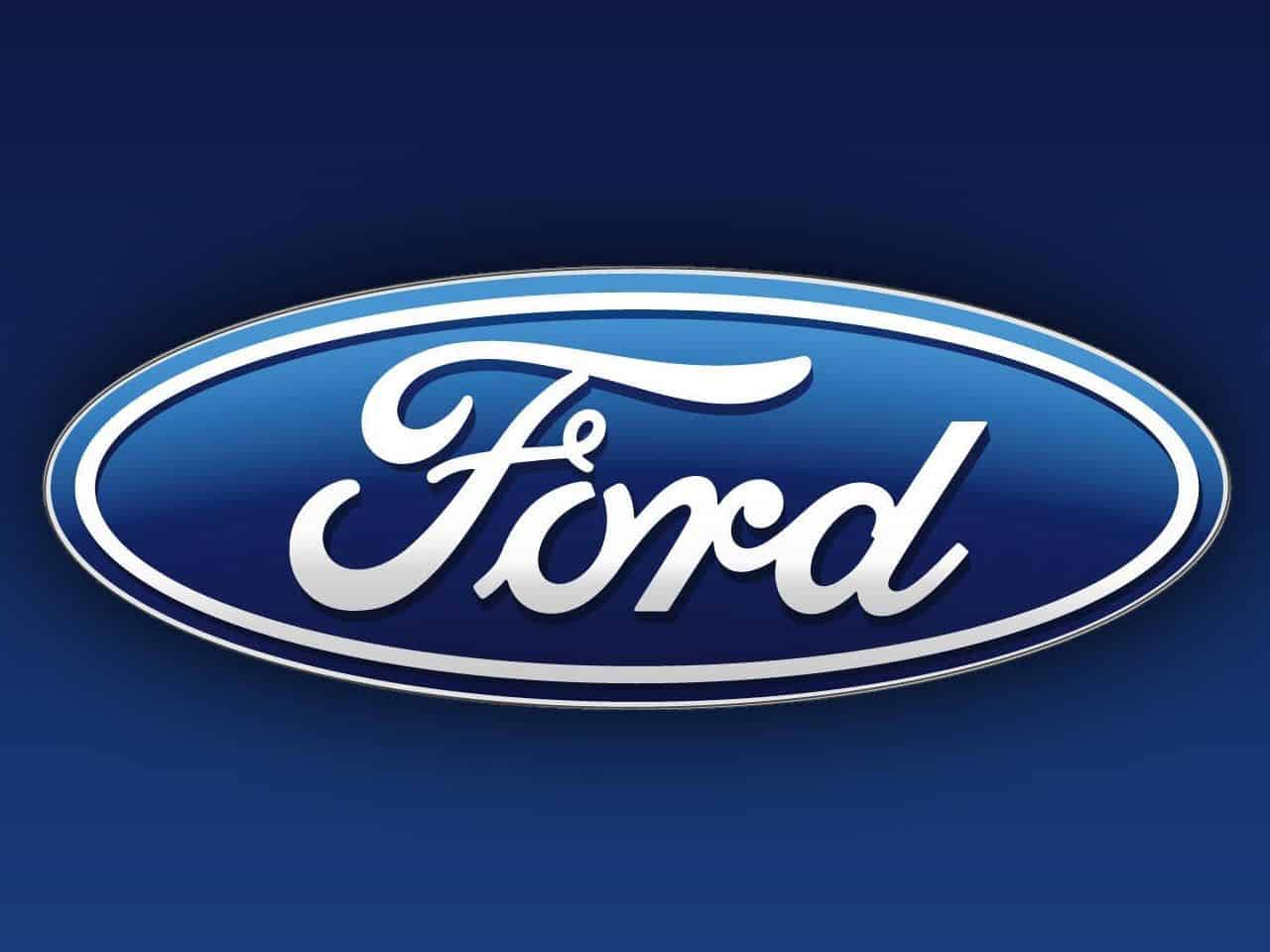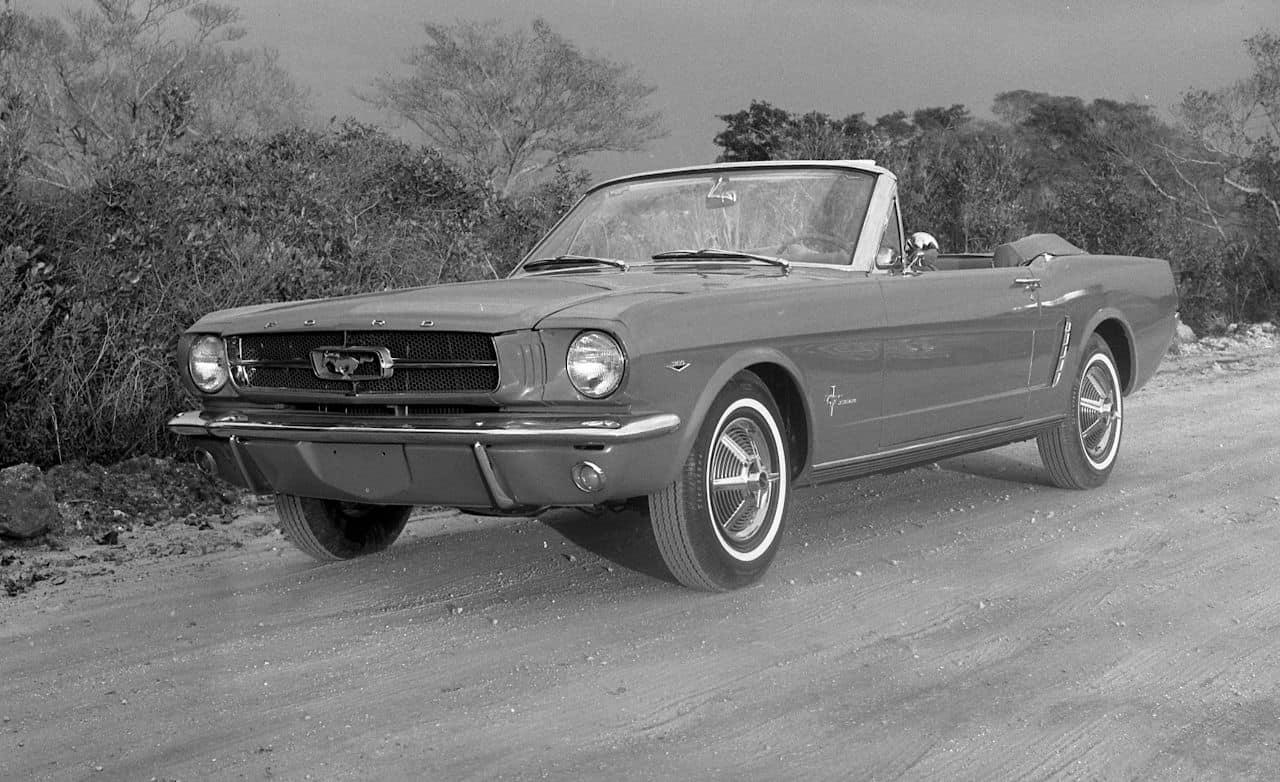It’s one of the most iconic brands in the industry, and for better or worse, it has one of the most iconic logos. And just like the brand, it’s a logo packed with history and meaning. Keep reading for a the ford logo history that’s more interesting than you think.
The History of the Ford Logo

When Henry Ford founded the Ford Motor Company in 1903, the logo looked nothing like the blue emblem we see today. In fact, it was green and wasn’t written in the iconic text that you see today.
In fact, the original Ford logo was far more complex, with an embroidered edge and extra text mixed into the logo.
While Henry Ford didn’t plaster the iconic Ford script on the original Ford Model A, the company commonly used it throughout company correspondence. Despite the popular myth that it’s Henry Ford’s signature, Ford’s first chief engineer/designer, Childe Harold Wills, was designed.
The first time the “Ford” script appeared on a logo in the iconic text we’ve all come to recognize was in 1907. Since then, it’s been incorporated into every Ford logo, although the text has had minor alterations.
It wasn’t until 1927, 24 years after Ford’s inception, that Ford changed its logo to a similar design that it still uses today. While Ford has officially had three logo changes since then, they are incredibly similar to its current design.
They all feature small changes, like making the oval rounder and making minor tweaks to the Ford script.
What Does the Ford Logo Mean?
Contrary to what many sites will try to tell you, the Ford logo doesn’t have some complex deep meaning. The blue doesn’t represent anything in particular, and of course, the name “Ford” is in reference to Henry Ford, who founded the company.
Other than that, there isn’t any real deep meaning to the logo. The oval was a stylistic choice and has evolved to the “3-D” design that we see commonly used today. There’s a lot of history behind the Ford logo, but it’s not one full of deep symbolism.
Instead, it’s one of branding and marketing. Ford wanted an iconic logo that would be instantly recognizable and easy to manufacture onto their vehicles. The simple Ford script on a blue oval background fits the bill nicely.
The Iconic Ford Brand

No brand screams American ingenuity and entrepreneurship like Ford. They revolutionized the assembly line, created the first mass-produced car, improved employee working conditions, and helped to turn the tide during the second world war.
The Assembly Line and Mass Production
The first Ford produced was the Model A in 1903. But they only made a few a day, and this remained the case until 1908 when Ford revealed the Model T. It was then that Ford started to optimize a new concept at the time, the assembly line.
It was so successful that in 1909, the first full year of production for the Model T, they built 10,000 cars. Ford continued to optimize its revolutionary means of assembly, and by 1912 they made 170,211 Model Ts.
It was then that Ford introduced another first – the moving assembly line. It took Ford’s already successful assembly line procedures and put them into overdrive, allowing them to produce 202,667 cars in a year.
This was an American first and allowed for lower production costs and a cheaper car that was available to the everyday American for the first time. Before that, cars were prohibitively expensive, making them luxuries only the rich could afford.
Employee Conditions
With the invention of the moving assembly line, conditions for workers decreased drastically. This led to massive amounts of turnover, which slowed down production and raised costs.
Henry Ford addressed this in 1914 by doubling the salary of his factory employees to $5 a day. Furthermore, he reduced shift lengths from nine hours to eight and instituted the 40-hour workweek.
As a result, employee retention rates skyrocketed, allowing Ford to reduce production costs and improve efficiency. Both the increased wages and lowered costs of a Model T meant that for the first-time employees could afford to buy one of the Model T’s they helped create.
Ford and World War II
Following the Japanese attack on Pearl Harbor, Ford ramped upped production for the war effort. They produced 390,000 tanks, 27,000 engines, 270,000 jeeps, 8,000 B24 Liberators, and countless other parts and mechanisms to aid in the war effort.
Of all manufacturers in the United States, Ford ranked third in the value of wartime contracts. This enabled a lucrative business model and further established Ford as an iconic American brand.
Post-WWII
Following the second world war, Ford settled down into a more typical automotive manufacturer. They dabbled in ownership stakes of Mazda, Volvo, and Land Rover, but ended up selling all of its shares in other automotive manufacturers.
In 1964 Ford released its first Mustang; the brand has been so successful that in 2018 Ford sold its ten-millionth Mustang. In 1966 Ford released the Bronco, and in 1991 they released the Ford Explorer.

None of these developments happened within Henry Ford’s lifetime. He died in 1947, and his son, Henry Ford II, took over as the company’s chairman.
Modern Developments/Future Vision
If you’re not moving forward, you’re moving backward. While Ford has been guilty of this in the past – they didn’t do much after the success of the Model T – they aren’t resting on their laurels any longer.
Mach E
Is the future of American muscle cars electric? Probably not, but that doesn’t mean there isn’t a growing market for them. Ford has developed the Mach E as their first all-electric Mustang, and it doesn’t disappoint. While Ford hasn’t released it yet, the fully-loaded Mach E should have a 0-60 time around 3.5 seconds.
Even its base model is projecting a 0-60 time around 6 seconds. An all-electric muscle car won’t appeal to everyone, but that won’t matter if it’s dusting them on the track.
With the base model starting at under 30,000, and a seven-speed manual transmission, the Ford Bronco looks like it genuinely will be a blast from the past.
Adding to its unique style, the Bronco will have fully removable doors, and top and are four-wheel drive, giving those looking for a real off-road vehicle another option besides a Jeep.
Bringing back the Bronco
It was an iconic part of the company for over 30 years, but in 1996 Ford abruptly canceled the line. In 2021 they’re bringing it back. Nostalgia, performance, and style will set this SUV apart from the pack.
All-Electric Transit
The all-electric Ford Transit will become the first all-electric van in the Ford lineup, but it won’t hit the market until 2022. Considering the popularity of the traditional Transit with businesses, it’s not hard to see how this will fit into the next generation of businesses lineup.
Summary
Ford is truly the car that most represents the American automotive industry. They’ve been producing cars for over 115 years, and they’ve been using a similar logo for over 100 of those years. When it comes to stories of American entrepreneurism, nothing quite tops the story of Henry Ford.








